Bears, renowned for their strength, size, and adaptability, are some of the most fascinating and formidable creatures on the planet. Despite their often cuddly portrayal in popular media, bears, especially the largest species, are powerful apex predators with a range of survival strategies. This article dives into the world of the largest bears still roaming the Earth today, from the icy reaches of the Arctic to the dense forests of North America and Eurasia.
The polar bear holds the title of the largest bear species and the largest land carnivore on Earth. Found across the Arctic regions, these bears are uniquely adapted to life in the cold, relying on sea ice for hunting seals and other aquarium/52-marine-animals.html">marine animals.
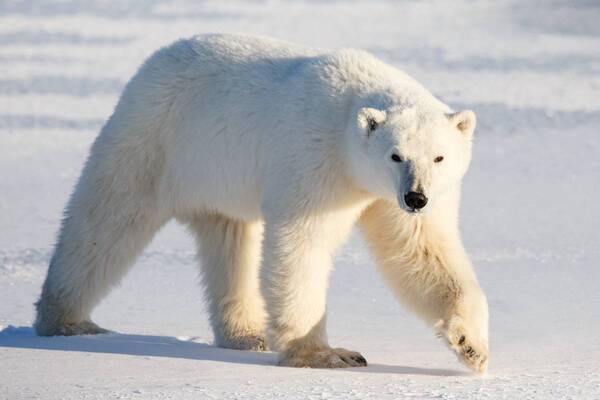
Size and Weight: Male polar bears typically weigh between 770–1,500 lbs (350–700 kg), with some individuals exceeding 2,200 lbs (1,000 kg). When standing on their hind legs, they can reach up to 11 feet (3.37 m) tall.
Diet: Primarily carnivorous, polar bears feed on seals, particularly ringed and bearded seals, and will also hunt walruses and small whales when available.
Habitat: These apex predators roam across the Arctic Circle, spanning parts of Alaska, Canada, Greenland, and Russia.
Conservation Status: Listed as Vulnerable by the IUCN, polar bears are facing significant threats from climate change and habitat loss due to the melting of sea ice.
“Polar bears have adapted to an extraordinary life on ice, making them true survivors in one of the most hostile environments on Earth” (International Union for Conservation of Nature, 2023).
Native to the Kodiak Archipelago in Alaska, the Kodiak bear is the largest subspecies of brown bear. Kodiak bears are renowned for their size and strength, often outmatching other brown bears in terms of sheer bulk.

Size and Weight: Kodiak bears typically weigh between 660–1,320 lbs (300–600 kg), with the largest recorded individuals tipping the scales at 1,656 lbs (751 kg). Captive Kodiak bears have reached weights up to 2,130 lbs (967 kg).
Height: Standing upright, Kodiak bears can grow to between 8 and 9.5 feet (2.4–2.9 m) tall.
Diet: They are omnivores, with a diet that includes fish (especially salmon), berries, grasses, and marine invertebrates.
Conservation Status: Kodiak bears are considered a species of Least Concern by the IUCN, with their population stable and growing.
“Kodiak bears are true giants of the bear world, with an almost mythic presence in the wilds of Alaska” (National Park Service, 2022).
Found primarily on the Kamchatka Peninsula in Russia, the Kamchatka brown bear is the largest subspecies of brown bear in Eurasia. They are comparable in size to Kodiak bears and are known for their large, muscular builds.
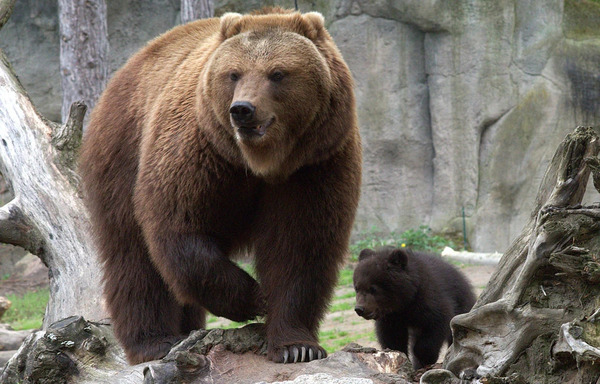
Size and Weight: Kamchatka bears can weigh up to 1,430 lbs (650 kg), with some individuals exceeding this weight in certain seasons.
Height: When standing on their hind legs, Kamchatka bears can reach up to 9 feet (2.7 m).
Diet: These omnivores feed on a varied diet of fish (especially salmon), berries, roots, and small mammals. They are also known to hunt larger mammals when the opportunity arises.
Conservation Status: Kamchatka bears are listed as Least Concern, with a population of around 10,000–15,000 individuals.
“The Kamchatka brown bear thrives in the cold, wild landscapes of eastern Russia, where abundant salmon and vast wilderness support their enormous size” (Wildlife Conservation Society, 2023).
The Ussuri brown bear, also known as the black grizzly, is a subspecies found in eastern Russia, northeastern China, and the Korean Peninsula. They are closely related to the Eurasian brown bear but tend to be slightly larger.
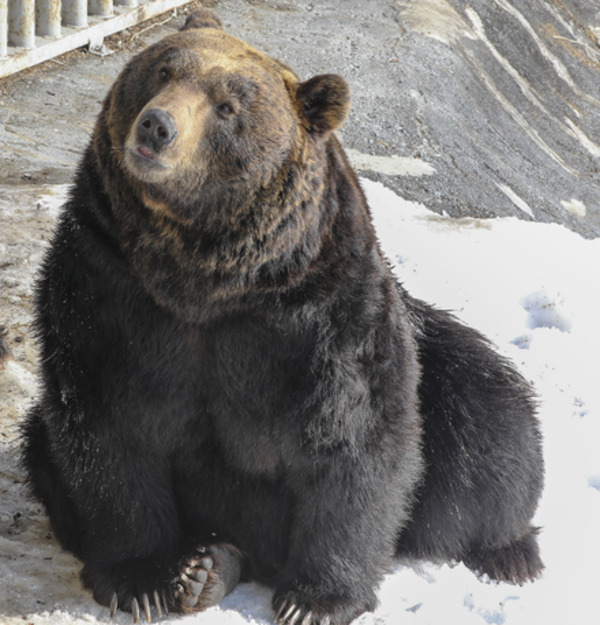
Size and Weight: Ussuri brown bears typically weigh between 880–1,210 lbs (400–550 kg), with some individuals reaching over 1,200 lbs (540 kg).
Height: They stand between 7 and 8 feet (2.1–2.4 m) when on their hind legs.
Diet: Their diet is mostly omnivorous, consisting of fruits, berries, nuts, fish, and small mammals.
Conservation Status: While listed as Least Concern, Ussuri bears face threats from habitat loss and poaching in certain regions.
“The Ussuri bear is a testament to the adaptability of brown bears, thriving in a diverse range of habitats from temperate forests to coastal regions” (Russian Ministry of Natural Resources, 2021).
Grizzly bears are one of the most famous bear species and are found in North America, particularly in Alaska, Canada, and the northwestern United States. A subspecies of the brown bear, grizzlies are known for their fearsome appearance and aggressive nature.
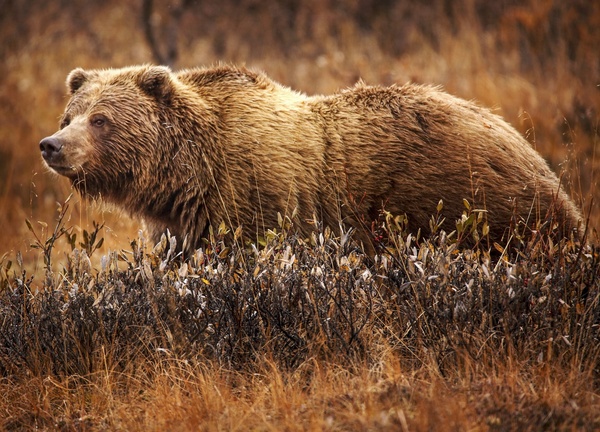
Size and Weight: Male grizzlies can weigh between 400–790 lbs (180–360 kg), with coastal grizzlies (often referred to as Alaskan brown bears) growing as large as 1,000 lbs (450 kg).
Height: When standing on their hind legs, grizzlies can reach 8 feet (2.4 m) tall.
Diet: Grizzly bears are omnivores, with a diet that includes fish (salmon), large mammals (moose, deer), berries, and roots.
Conservation Status: Grizzly bears are considered Threatened in the lower 48 United States and Endangered in parts of Canada.
“Grizzly bears symbolize the raw power of the wilderness, and they play a critical role in the ecosystems they inhabit” (National Wildlife Federation, 2023).
The Eurasian brown bear is one of the most widespread bear species, found throughout Europe, Russia, and parts of Asia. These bears are known for their size and adaptability to various environments.
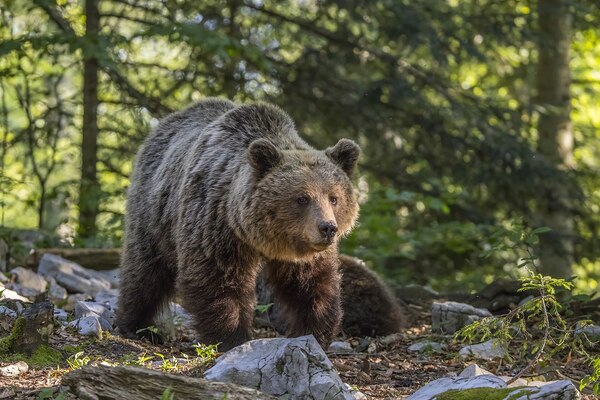
Size and Weight: Males typically weigh between 550–660 lbs (250–300 kg), though some individuals can weigh over 1,000 lbs (450 kg).
Height: Standing on their hind legs, they can reach up to 8 feet (2.4 m).
Diet: Like other brown bears, they are omnivores, feeding on roots, berries, insects, fish, and mammals.
Conservation Status: Listed as Least Concern, although populations in certain areas are declining due to habitat loss and human-wildlife conflict.
“Eurasian brown bears are resilient, thriving in a variety of habitats across Europe and Asia, from remote forests to mountainous regions” (World Wildlife Fund, 2022).
The American black bear is the smallest and most common bear species in North America. Despite its smaller size compared to other bears, it is still a formidable predator and scavenger.
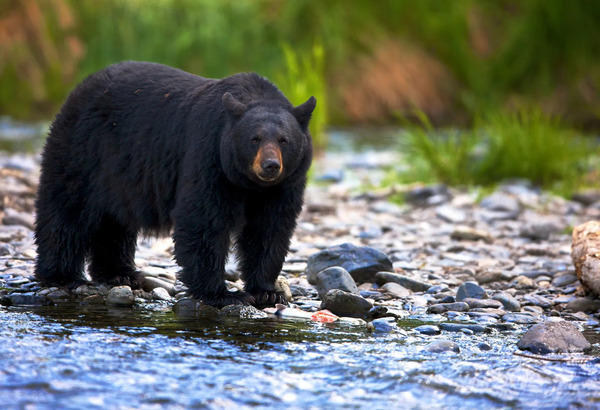
Size and Weight: Males generally weigh between 126–551 lbs (57–250 kg), though the largest individuals can exceed 1,000 lbs (450 kg).
Height: They typically stand between 5–6 feet (1.5–1.8 m) on their hind legs.
Diet: Black bears are omnivorous, feeding on fruits, insects, and small mammals. They are also known to scavenge from human campsites and garbage.
Conservation Status: Listed as Least Concern due to a stable and widespread population.
“American black bears are ubiquitous in North America, found in forests, swamps, and even urban areas” (U.S. National Park Service, 2023).
Native to the Andes Mountains of South America, the spectacled bear is the only bear species found in South America. It is also known as the Andean bear, named for the distinctive markings around its eyes that resemble spectacles.
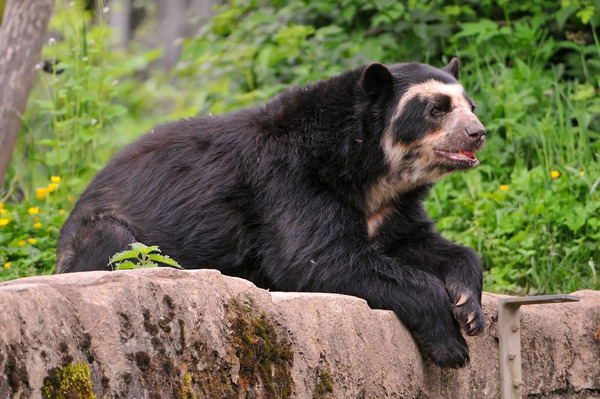
Size and Weight: Males typically weigh 220–440 lbs (100–200 kg), with the largest reaching up to 491 lbs (222 kg).
Diet: The spectacled bear feeds on a variety of plant matter, including fruits, leaves, and bamboo, but will also hunt small mammals.
Conservation Status: Vulnerable due to habitat loss and poaching.
“Spectacled bears play a vital role in the ecosystems of the Andes, where they help disperse seeds and maintain forest health” (World Conservation Union, 2022).
Native to the Indian subcontinent, the sloth bear is known for its distinctive long, shaggy fur and downward-facing lips, which it uses to suck up insects like termites and ants.
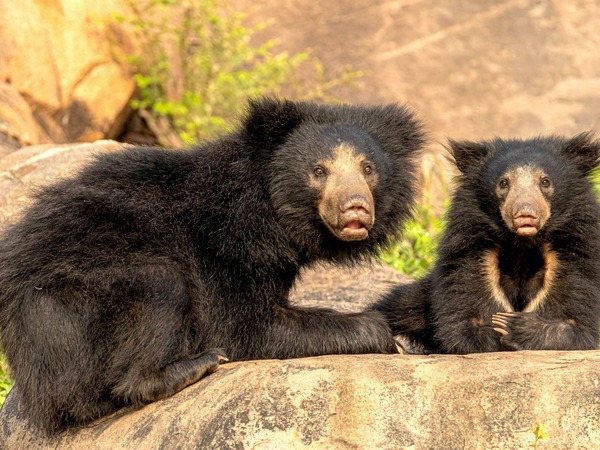
Size and Weight: Males weigh between 176–320 lbs (80–145 kg), while females are smaller, averaging 121–231 lbs (55–105 kg).
Diet: The sloth bear is primarily insectivorous, feeding on termites, ants, and fruit.
Conservation Status: Vulnerable due to habitat loss and hunting.
“Sloth bears have evolved unique traits to thrive in their specialized ecological niches in India and Sri Lanka” (Wildlife Protection Society of India, 2022).
Also known as the moon bear due to its characteristic white chest marking, the Asiatic black bear is found across much of Asia, from the Himalayas to the Russian Far East.
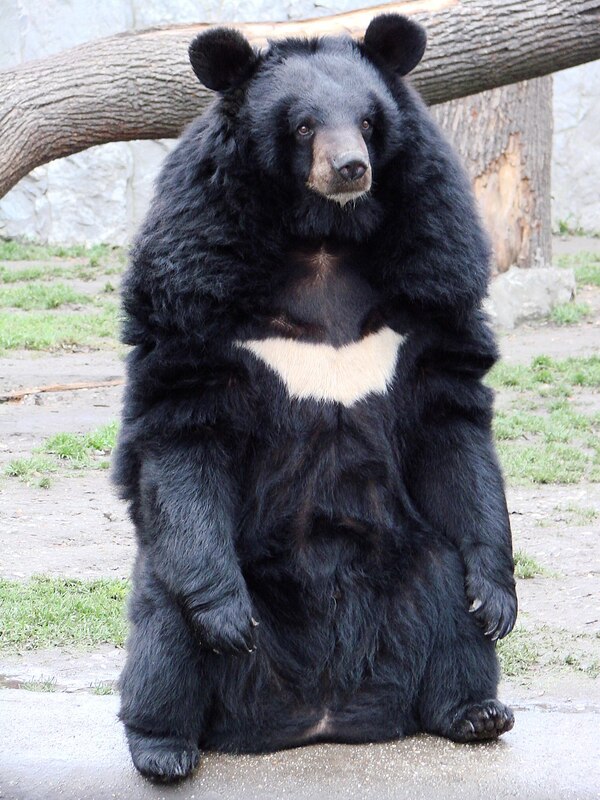
Size and Weight: Male Asiatic black bears typically weigh between 130–440 lbs (60–200 kg), while females are smaller.
Diet: They are omnivorous, feeding on fruit, insects, small mammals, and sometimes carrion.
Conservation Status: Vulnerable, facing threats from poaching and habitat loss.
“The Asiatic black bear’s elusive nature makes it one of the most mysterious bears of the East” (Asian Bear Conservation Network, 2021).
Here’s a table summarizing the 10 largest bears mentioned in the article:
| Rank | Bear Species | Scientific Name | Habitat | Average Weight | Max Weight | Max Height (on Hind Legs) | Diet | Conservation Status |
|---|---|---|---|---|---|---|---|---|
| 1 | Polar Bear | Ursus maritimus | Arctic regions (Alaska, Canada, Russia, Greenland) | 770–1,500 lbs (350–700 kg) | 2,200 lbs (1,000 kg) | 11 feet (3.37 m) | Carnivorous: seals, walruses, small whales | Vulnerable |
| 2 | Kodiak Bear | Ursus arctos middendorffi | Kodiak Archipelago, Alaska | 660–1,320 lbs (300–600 kg) | 2,130 lbs (967 kg) | 9.5 feet (2.9 m) | Omnivorous: salmon, berries, marine invertebrates | Least Concern |
| 3 | Kamchatka Brown Bear | Ursus arctos beringianus | Kamchatka Peninsula, Russia | 880–1,210 lbs (400–550 kg) | 1,430 lbs (650 kg) | 9 feet (2.7 m) | Omnivorous: fish, berries, small mammals | Least Concern |
| 4 | Ussuri Brown Bear | Ursus arctos lasiotus | Eastern Russia, Northeast China, Korea | 880–1,210 lbs (400–550 kg) | Over 1,200 lbs (540 kg) | 8 feet (2.4 m) | Omnivorous: fruits, fish, berries, small mammals | Least Concern |
| 5 | Grizzly Bear | Ursus arctos horribilis | North America (Alaska, Canada, U.S.) | 400–790 lbs (180–360 kg) | 1,000 lbs (450 kg) | 8 feet (2.4 m) | Omnivorous: salmon, large mammals, berries | Threatened (U.S.), Endangered (Canada) |
| 6 | Eurasian Brown Bear | Ursus arctos arctos | Europe, Russia, Asia | 550–660 lbs (250–300 kg) | Over 1,000 lbs (450 kg) | 8 feet (2.4 m) | Omnivorous: roots, berries, insects, fish, mammals | Least Concern |
| 7 | American Black Bear | Ursus americanus | North America (U.S., Canada, Mexico) | 126–551 lbs (57–250 kg) | Over 1,000 lbs (450 kg) | 5–6 feet (1.5–1.8 m) | Omnivorous: fruits, insects, small mammals, scavenging | Least Concern |
| 8 | Spectacled Bear | Tremarctos ornatus | Andes Mountains (South America) | 220–440 lbs (100–200 kg) | 491 lbs (222 kg) | 6 feet (1.8 m) | Herbivorous: fruits, leaves, bamboo, small mammals | Vulnerable |
| 9 | Sloth Bear | Melursus ursinus | Indian Subcontinent (India, Sri Lanka) | 176–320 lbs (80–145 kg) | 400 lbs (181 kg) | 6 feet (1.8 m) | Insectivorous: termites, ants, fruit | Vulnerable |
| 10 | Asiatic Black Bear | Ursus thibetanus | Asia (Himalayas, Russia, China) | 130–440 lbs (60–200 kg) | 550 lbs (250 kg) | 6–7 feet (1.8–2.1 m) | Omnivorous: fruit, insects, small mammals, carrion | Vulnerable |
This table gives a clear comparison of the largest bear species, their habitat, weight ranges, diet, and conservation status.
Conclusion
Bears are among the most powerful and awe-inspiring creatures in the animal kingdom. The largest bear species—such as the polar bear, Kodiak bear, and grizzly bear—embody raw strength and adaptability, each playing a crucial role in their respective ecosystems. However, many of these giant bears face significant threats from habitat destruction, poaching, and climate change. Protecting these magnificent creatures is critical, not only for preserving biodiversity but also for maintaining the health of the habitats they inhabit.
animal tags: Ursidae
We created this article in conjunction with AI technology, then made sure it was fact-checked and edited by a Animals Top editor.